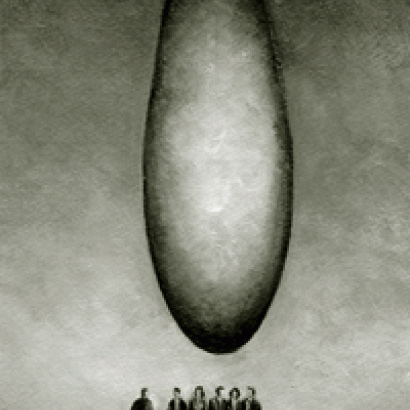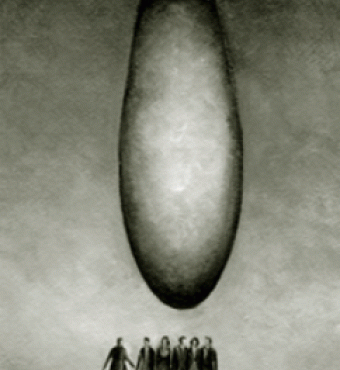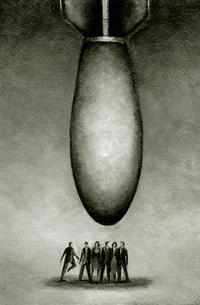- International Affairs
- US Foreign Policy
Perhaps the single most striking fact about the role of nuclear weapons since their introduction to the world fifty-two years ago is how few countries that are able to make nuclear weapons have actually done so. The ratio of the number of countries that possess nuclear weapons to the number able to do so shows a marked decline over time. Moreover, until recently the possessors of nuclear weapons have been relatively prudent and competent states. (Russia and Pakistan look decidedly less so today.)

The reluctance of countries to obtain these weapons is shown by the following:
Any of the developed countries could have acquired these weapons long ago, yet only four have done so (United States, United Kingdom, France, Israel).
A score or more economically less-advanced (but in the Soviet case technically advanced) countries have had the capacity to develop nuclear weapons, yet only five have done so (Soviet Union, China, India, Pakistan, South Africa).
This makes a total of nine nations having developed these weapons. With the nuclear weapons legacy from the former Soviet Union to Russia, Ukraine, Belarus, and Kazakhstan, the number of nations possessing nuclear weapons grew to twelve in 1992. With South Africa's becoming nonnuclear and Ukraine, Belarus, and Kazakhstan returning their weapons to Russia, there are now apparently eight nuclear powers.
Most nations capable of having these weapons, however, have elected not to do so for several reasons:
Weak perceptions of threats, perhaps because they are in a peaceful zone and their confidence is buttressed by a collective security system.
The absence of hostile designs on other nations.
Incorporation in a political system that prohibited it (notably the Soviet empire) or discouraged it (the Western one).
Domestic opposition on prudential or moral grounds, including worries about who would control nuclear weapons and distrust of future regimes. (South Africa's decision to dismantle its weapons was probably motivated mainly by the coming political changes.)
Expected hostile reactions from other nations.
Most of the fifty to seventy nuclear-capable but abstaining countries, including advanced ones such as Germany, Italy, Switzerland, Sweden, and Canada, are in relatively peaceful regions. Argentina and Brazil, both of which have dropped their nascent nuclear weapon programs, are also in relatively benign environments. Most countries in zones of instability, however, including the vast area from the Maghreb through the Middle East to Central and South Asia and beyond, were technically and socially unable to carry out such complex programs.
How might the drastic changes the world is now experiencing alter motivations for having these weapons? Heightening the demand is the fact that the perceived threats have not diminished for everyone and have increased for some. For instance, Pakistan's loss of support from the United States has spurred its bomb and missile programs. All the countries apparently trying to get nuclear weapons are in unstable zones; the only politically stable one is India. Then there is the problem of "loose nukes" in Russia. Coups, revolutions, and factional fighting could result in the loss of control or the use of such weapons. Indeed, at some point governments or domestic factions that engage in terrorism against the West could have powerful weapons available.
| All the countries trying to get nuclear weapons are in unstable zones. Then there is the problem of "loose nukes" in Russia. |
It is still the case, however, that key aspects of nuclear weapons remain somewhat difficult to acquire fifty years into the nuclear age. Although there are no nuclear secrets left to the assiduous student, it requires some technical-industrial organization, competent people, high-quality materials, and time to develop and build deliverable weapons.
Obtaining readily fissionable material remains a difficult task for not-very-competent governments. Yet this is no great cause for comfort since the ability to accomplish any given technological task becomes easier from the date of its introduction. Formerly exotic materials and processes become less exotic, cheaper, and more widely used in commercial products. A nuclear weapons program is now a medium-cost, medium-technology effort.
If nuclear weapons are of medium cost, chemical and biological weapons are cheap. That potent nerve agents are easy to make is shown by the fact that a Japanese sect made and used them. Apparently, there are several chemical programs in the developing world, especially in North Africa and the Middle East. As for biological agents, small quantities, appropriately delivered, can cause large numbers of deaths. The rapid pace of bioengineering is opening up the potential for the development of new biological agents.
Any state could move weapons of mass destruction to practically anywhere on earth. Anyone with a long-range civil aircraft has the means of delivering a bomb over great distances. Of particular worry is the prospect that nations such as Iran, Iraq, and North Korea will be able to deliver nuclear, chemical, or biological warheads with cruise or ballistic missiles. Cruise missiles having a range several hundred kilometers (hard to detect and intercept) are becoming ubiquitous and can be launched from land, aircraft, and ships. The Chinese-made CSS-2 missiles in Saudi Arabia are capable of reaching Western Europe, and there have been reports of Saudi Arabia seeking nuclear warheads for them. In short, the ability to deliver weapons of mass destruction long distances is inexorably increasing, and although Europe is closer to some possible launch sites than is the United States, the difference in exposure, if any, will not last long.
| As for biological agents, small quantities, appropriately delivered, can cause large numbers of death. |
This variety of delivery means should serve as a caution to those who believe that the answer to this class of threats is ballistic missile defenses, either for military forces in the field or for national territories. These might turn out to be cost-effective against the threats for which they are designed, but there are many threats for which they are not designed, notably attack by cruise missiles.
To repeat: At some point governments or domestic factions that engage in terrorism against the West could have powerful weapons available. Any assumption that such weapons will never actually be used is unjustified. Iraq has already used chemical agents against both Iran and its own Kurdish population.
















